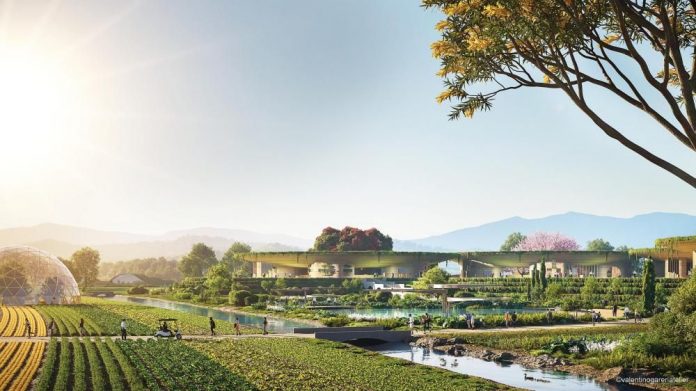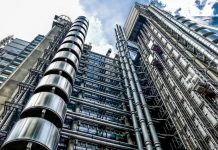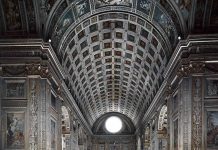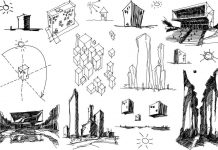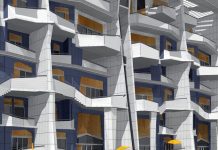Climate change occurring on the globe motivates the search for innovative solutions in architecture. An interesting concept was presented by Italian work Valentino Gareri atelier, acting on behalf of the Australian consulting company polisplan and the city council of Bellingen. The pilot project spiral village aims to create a self-sufficient and technologically advanced village where the balance between private and professional life can be re-imagined, and the cost of living will be dramatically lower than today.
A village on a spiral plan
The current project involves the development of an area of 40 hectares, on which there will be eight residential settlements. Spiral Village, as the name implies, provides for the location of buildings on the plan of the spiral. Residential areas will be concentrated in greater density towards the centre of the shape, and spiral lines will mark roads and paths ensuring free movement in the village. Spiral village can accommodate up to 200 people, while in each residential area there is room for 20-30 people living in separate households connected by a common roof structure. The common space is intended to build a sense of community among the inhabitants. The project will be implemented in the area of the Australian city of Bellingen. Among the sustainable solutions proposed by architects, it is worth noting the concept of urban Sequoia.
Model based on modern technologies
The spiral village project is an attempt to change the existing belief that a sustainable village is inextricably linked with the abandonment of comfort. The authors of the project rely on state-of-the-art technologies to ensure that residents do not have to give up anything. Spiral village is an example of a circular economy. The buildings will be built from materials created using modern 3D printing methods and using local raw materials. The characteristic round shape of the roof will fulfill an important function in obtaining solar energy and collecting rainwater. The water supply system will consist of many reservoirs located at different heights. The lowest of these will be used to purify the water used on the site, part of which will be pumped into the pond located at the highest to be re-discharged through the site. The project provides for zero waste. Inorganic materials will be transformed into new products or useful resources. A diversified agricultural system will provide the people with the food they need.

